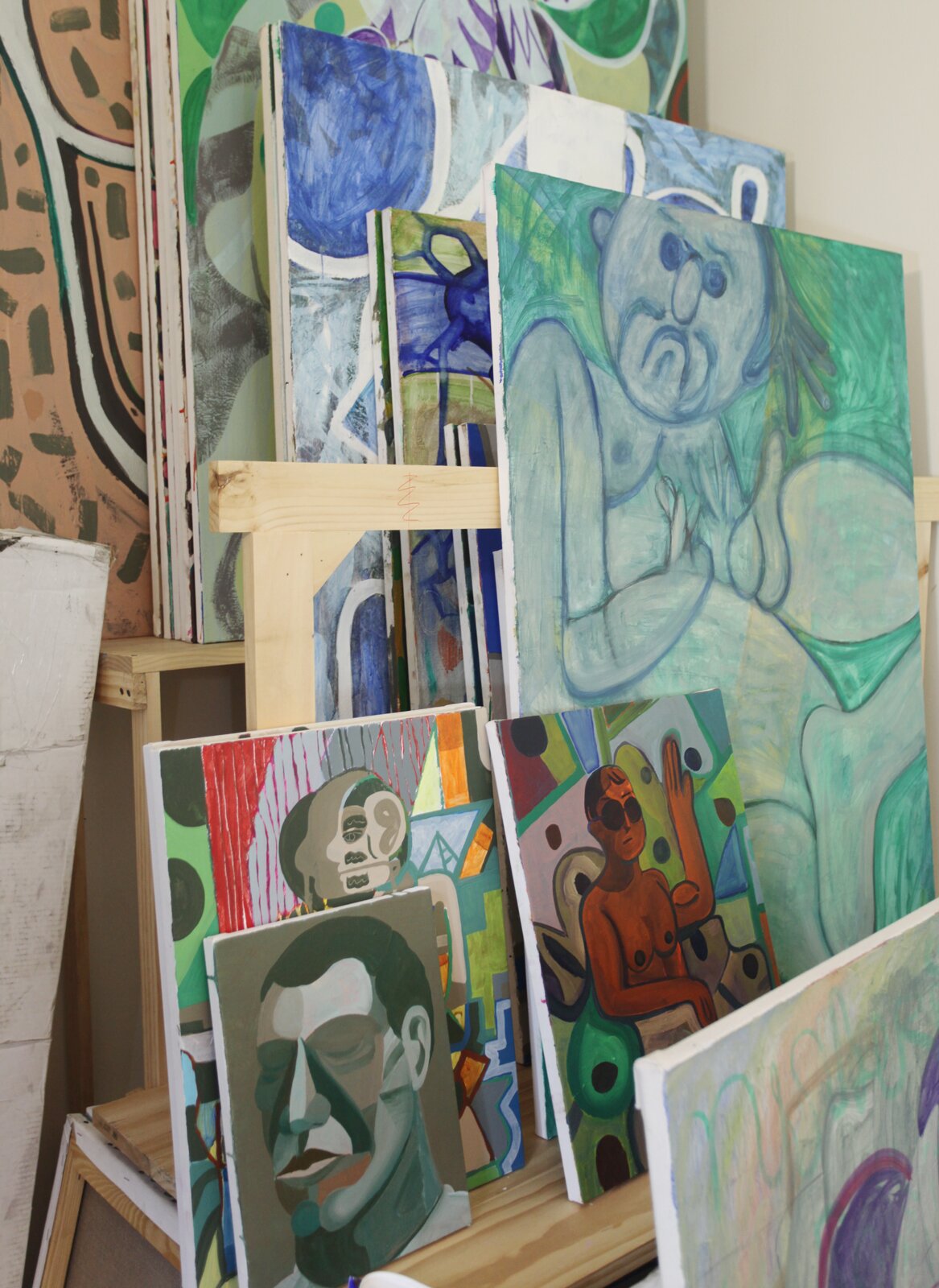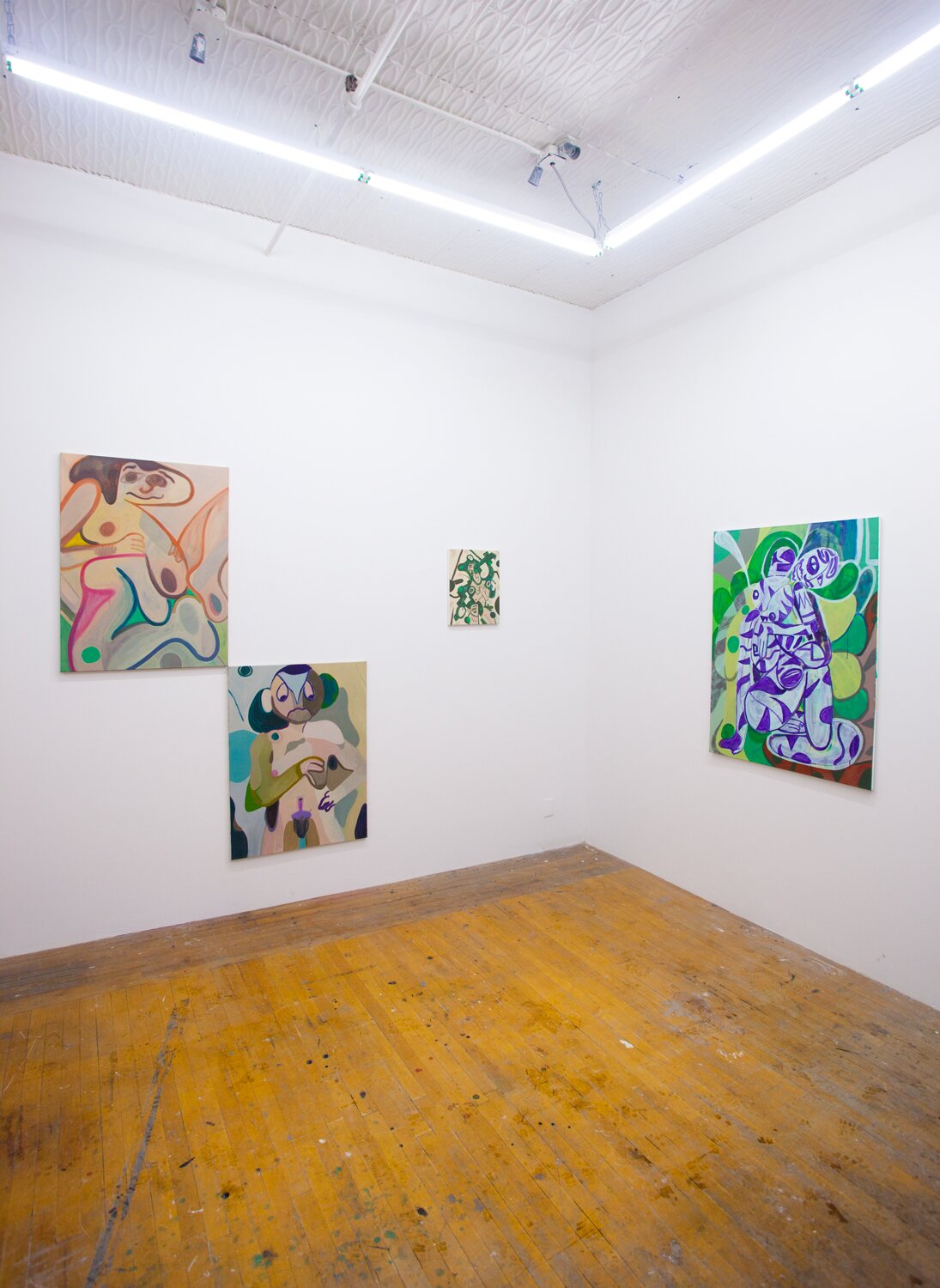
Zuriel Waters’s self portraits are earnest investigations in painting disguised in flamboyant sexual figures. His paintings border on the grotesque and yet they attract the viewer to look beyond the man boobs and the penetrating hand gestures, to the marks and the history behind each brushstroke.
We first met Zuriel Waters at RISD where he got his MFA in Painting and we were interested to see where his paintings would take him. Waters invited us to his live/work studio where we got a chance to view his new body of work for his show ‘Bad Boys’.
In the gallery almost life size paintings are hung in typical gallery fashion on white (#ffffff) walls and with enough space to give each painting room to breathe. The various personalities of each ‘Zuriel Waters’ portrait create a dialogue with one another. The most interesting arrangement is of two paintings that are hung together and touching corners which give the impression of being just a smidgen too close to each other’s personal space.
‘Bad Boys’ is currently on view until February 16th at
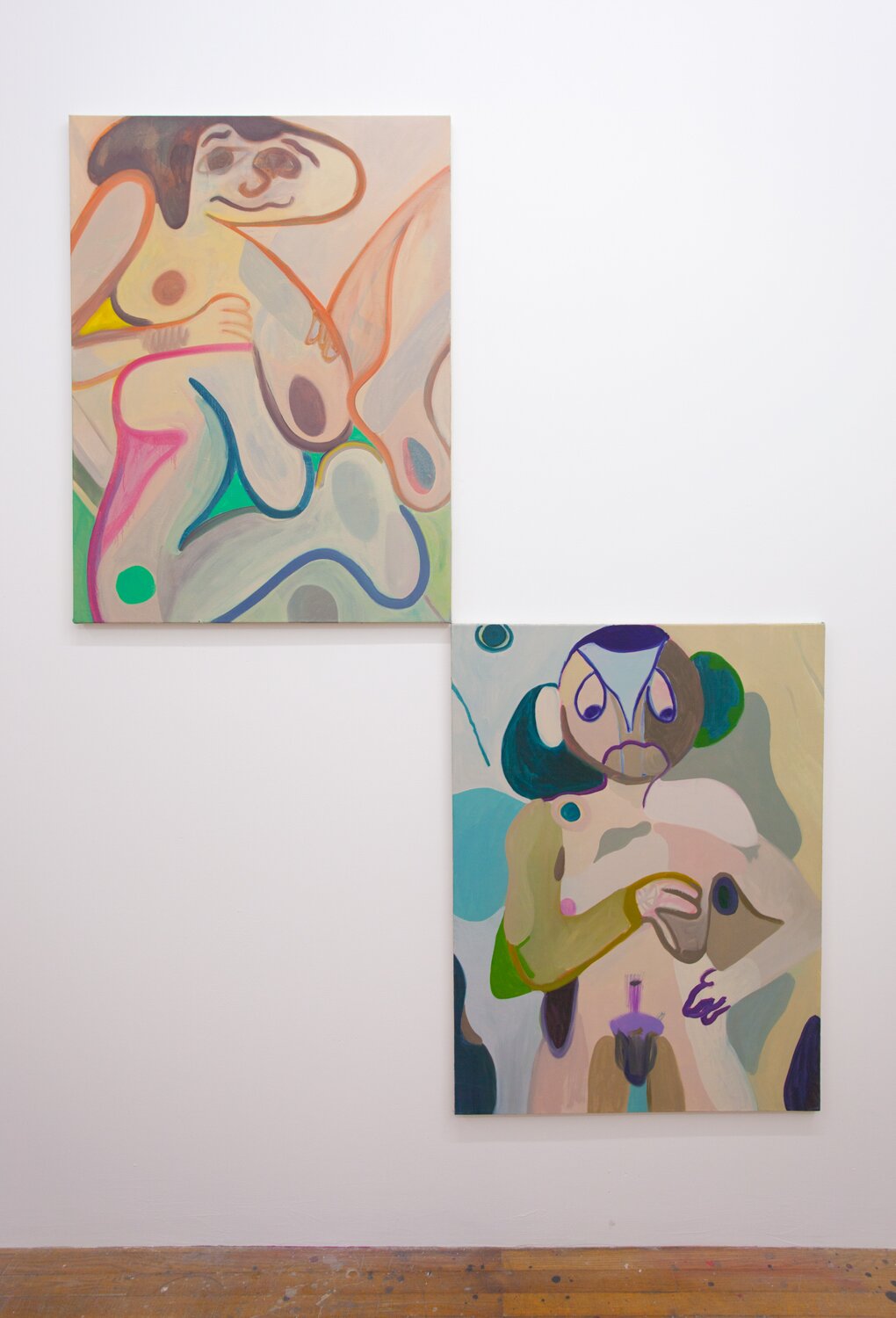
F:How do you start approaching your paintings? Do you start with the figure or the space?
ZW: I usually start with drawings, very fast line drawings and more recently colored pencil drawings. Sometimes these can actually function as studies for paintings but usually it is just a way to get myself into the mindset for working. In terms of space, I guess the figure creates the space you know, and sometimes it comes out of it. It’s hard to say.
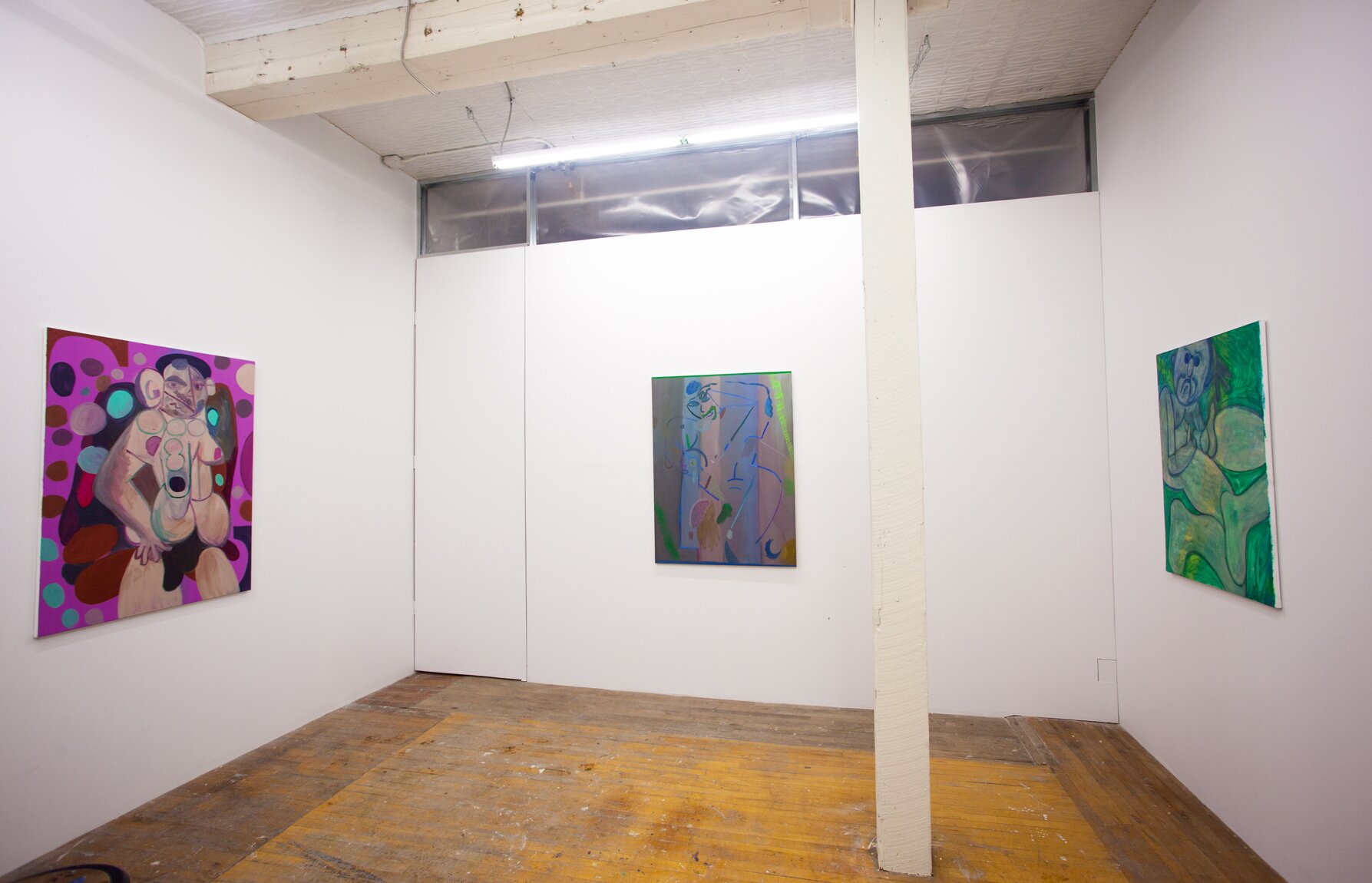
F: Does the (self-portrait) subject matter propel the painting or is it more of a reaction through the movements of painting?
ZW: The subject matter is kind of all important at first and sometimes, I’ll have a very clear idea of what I think the painting should be about. Sometimes this works! I love it when it works, because usually it does not work. Most often the initial idea gets painted over but maybe some small part of it will inform the next layer, like a general compositional idea or something. It’s funny, the ideas that will work in a painting, sometimes they are so dumb and simple, and sometimes just awkward overwrought pun-like things.
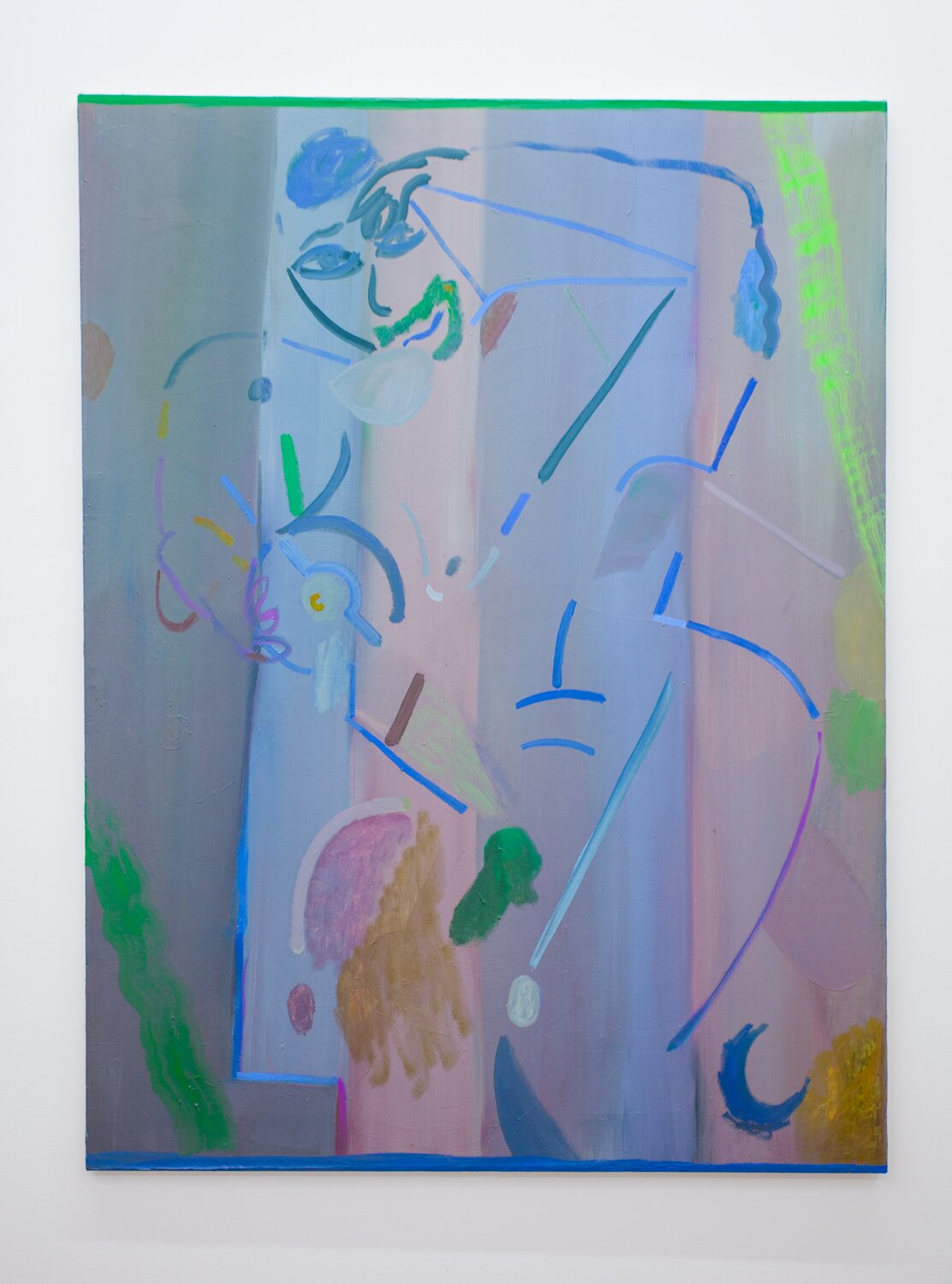
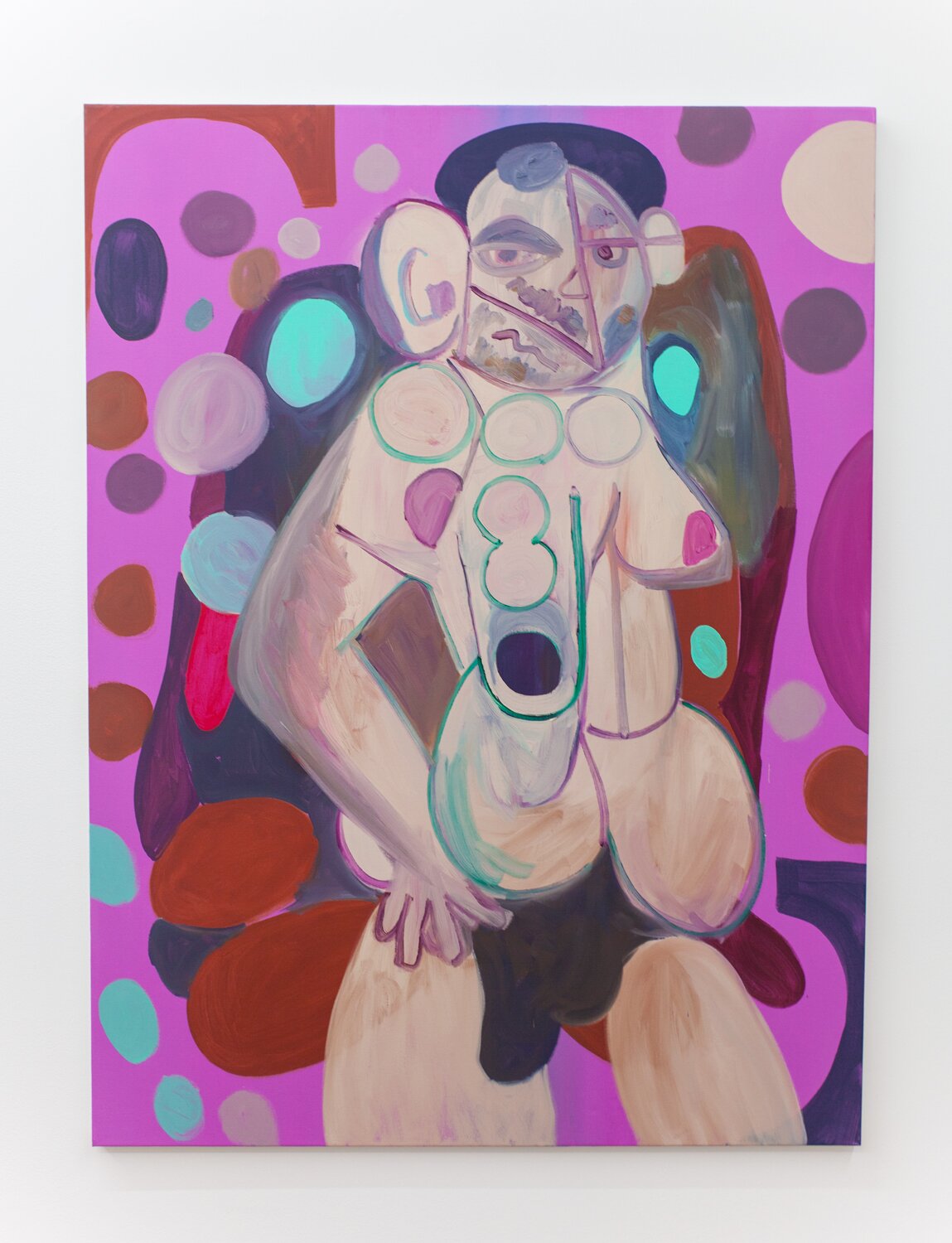
I think jokes and paintings are really similar. There’s this weird pdf I found online called “Greg Dean’s Step by Step to Stand-Up Comedy” that basically outlines jokes in this insanely formal way that ends up looks like lines of code or a math problem. It doesn’t exactly produce funny things, but if you follow the rules, you definitely end up with something that feels like a joke. Sometimes that’s the best kind of joke though. Rodney Dangerfield seems to do that all the time in his stand-up. There will be this litany of one-liners that are so off the mark but you end up laughing because of the constructed-ness of the situation, where you begin to see yourself almost as the laugh track and less of as a discerning audience member that gets to vote with their laughter. Tig Notaro too; her jokes are kind of the opposite in a formal sense because they are so long winded that finding the conventional joke structure within her stories is somehow really part of the humor about the situation. It seems like these kind of comedians are using the ‘joke text book’ in a more abstract way, something to work against. So yeah, I think you can look at art-making like this. There is a sense of standard expectations that we have when we go into a show and that creates opportunities for artists to hit them or play with them or intentionally completely avoid them. I guess this is all a way of saying that the subject matter is completely embedded in the formal structure of the painting. It’s like if paintings are people, then you wouldn’t say (anymore) that you know, you have your brain and then your have your body and there’s this cartesian split between them, because now I think we know how constructed and physically molded our identities are. I mean unless you are a religious person. I guess it’s easy to take atheism for granted in the art world though.


F: I have to know. Are your self portraits painted from life or from a reference?
ZW: Well, not really either. At one point I did take some photos of me to use as a reference, and it was a really cool body connection to have with the kind of posing and attitude that I was going for. Maybe it’s something I should do more, but usually, if it is a reference then they all come from those little drawings I make.
I’ve been thinking about getting a big mirror though…
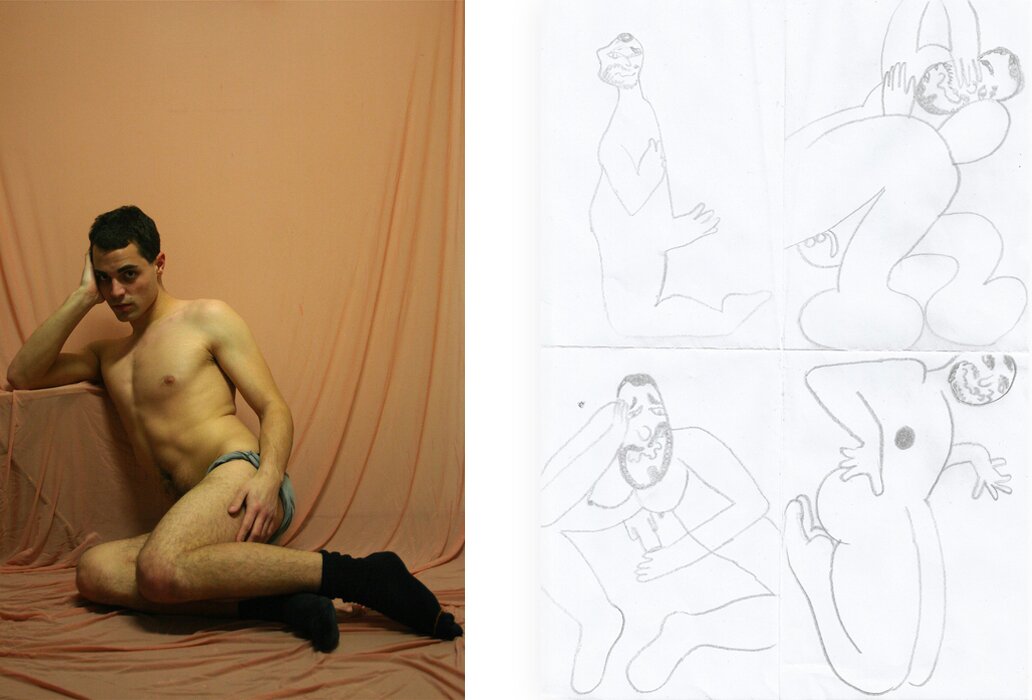
Courtesy of the artist
F: Your paintings are overtly sexual in nature and there’s a conflicting ambiguousness in the subject matter’s gender. Can you talk about the feminine and masculine qualities found in these figures?
ZW: If you google search for my name ‘Zuriel Waters’ there is this cheesecake style photo I took of myself as an art piece during grad school that comes up really high on the list. I’m just wearing frumpy socks and rolled up underwear and Im trying my best to have this lolita like victim/aggressor attitude. I don’t know why, sometimes you want to feel edgy and sexy, you know. So, I started adding boobs to my body. There’s this painting I did for show that is me in this sort of painful orgasmic rapture clutching my tits and having an aching hard-on that was really inspired by that photo. The boobs afterwards ended up being this almost like cartoon character uniform symbology. In other words they started as a way to amp up my ability to sexualize/objectify my body and are now these almost like dumb appendages. I also have boobs in real life too, I mean not me especially, but men have boobs too obviously and sometimes they are kind of floppy and misbehaving and I always thought it was annoying that we have no way of like claiming that body part in a non like body armor kind of way.
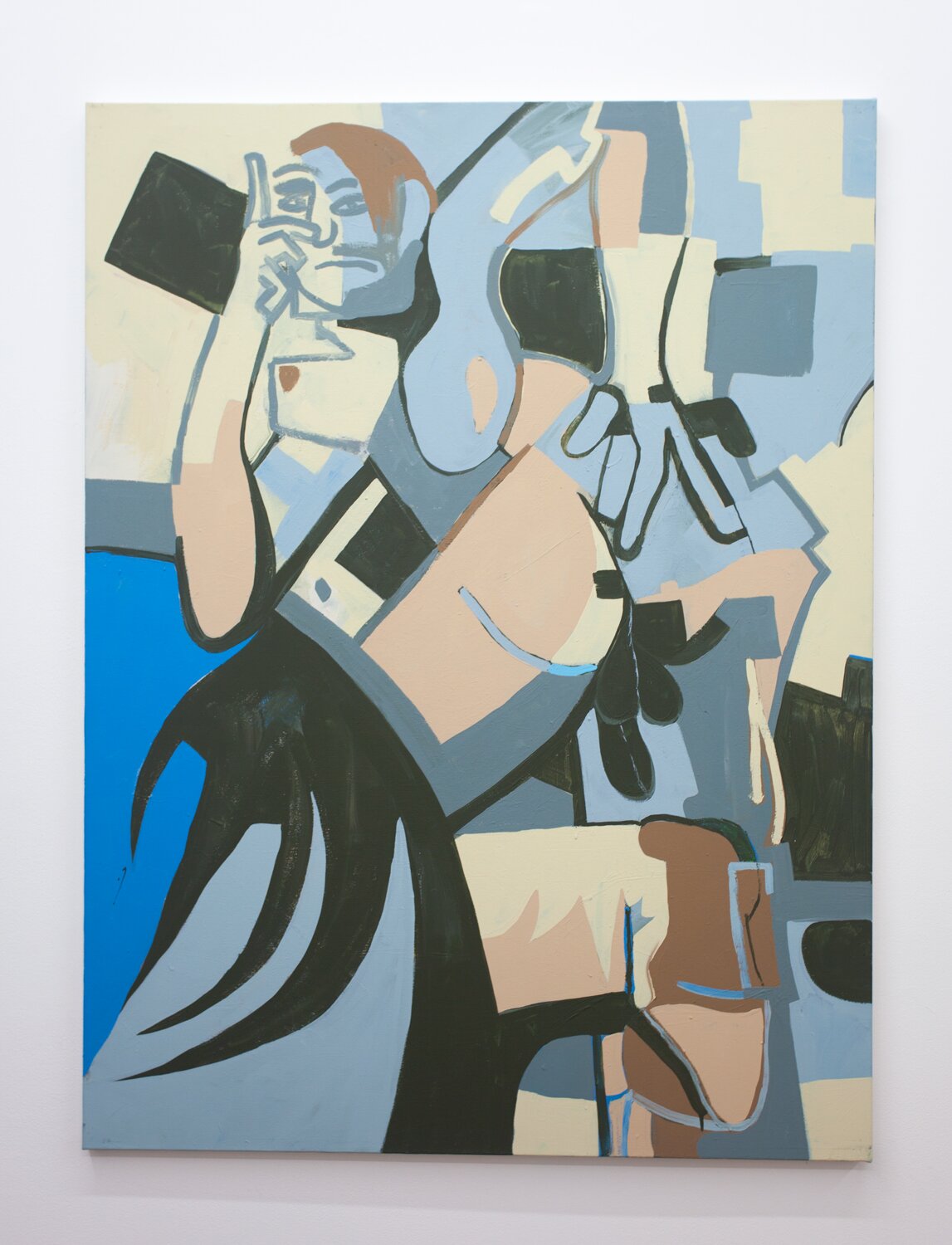
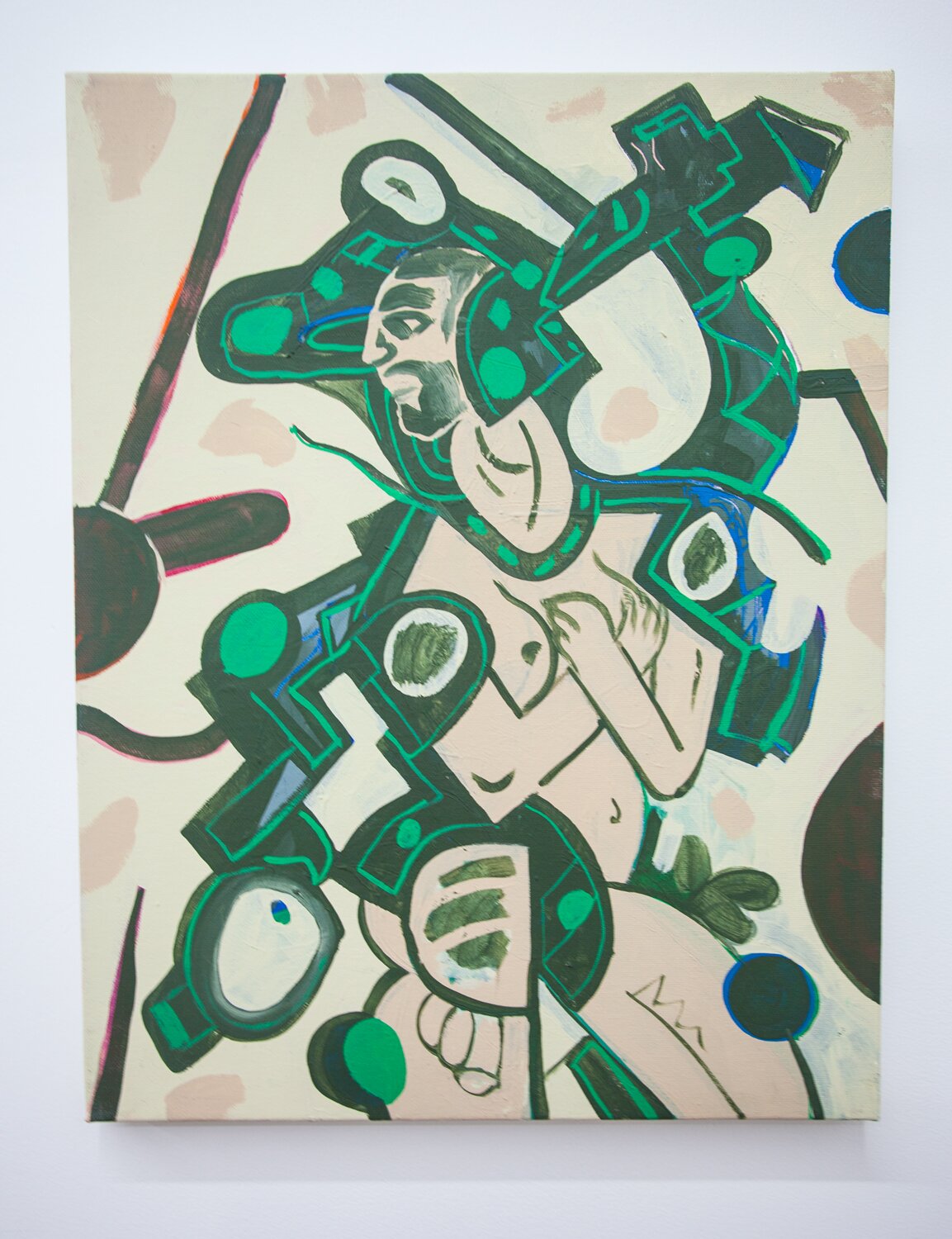
F: I feel that these paintings verge on the idea of painting as a form of masturbation especially since these are self-portraits. It’s as much about you masturbating by making the work as it is masturbating for the viewer visually. Either way, we’re all getting off…
ZW: Ew gross… I mean, totally
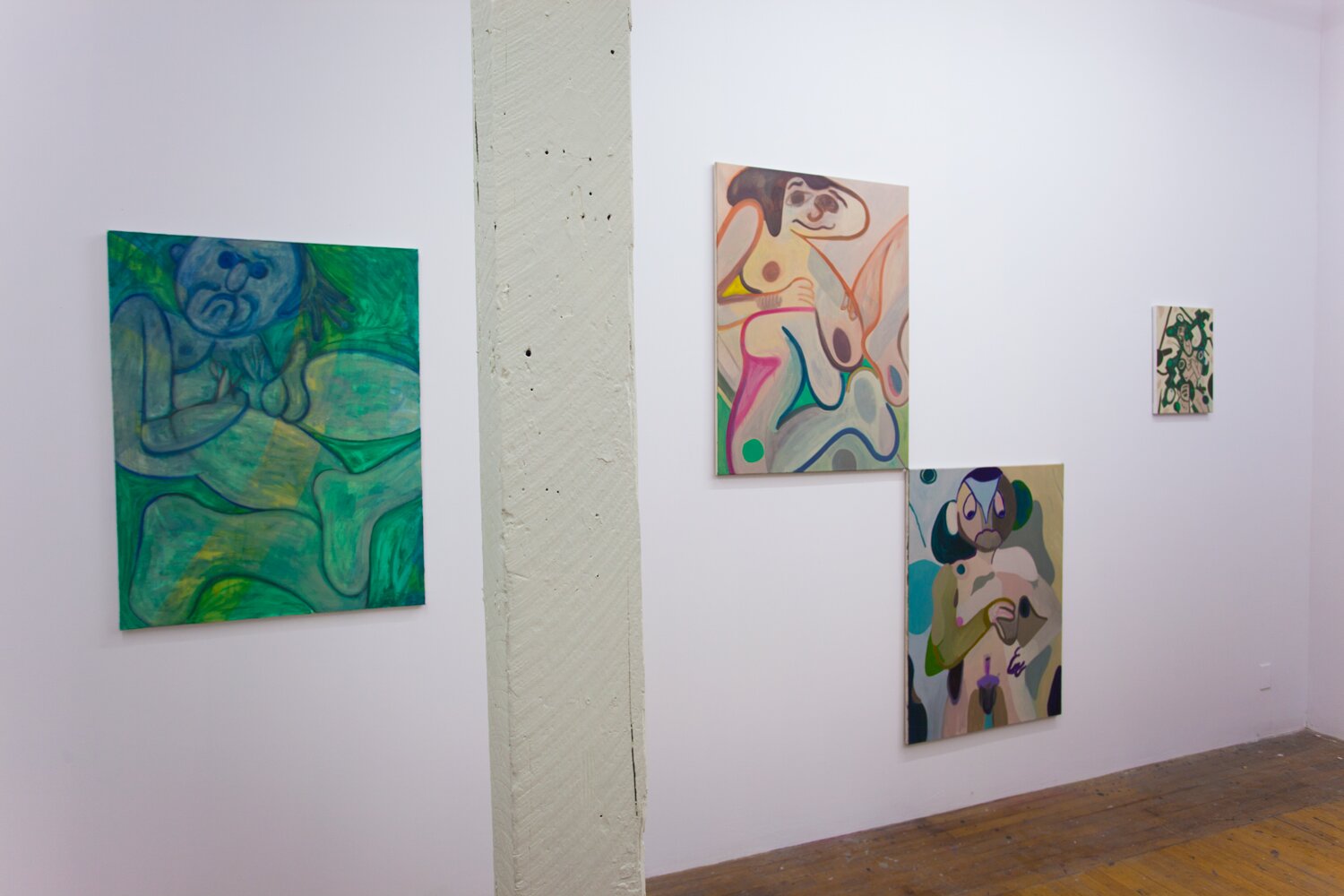
F: The colors are really great in these paintings. The thick paint and bright colors really pop off the gray surface which in turn, invites the viewer to peer closer at each individual mark. Can you talk a bit about your process and decision making within this?
ZW: Um… color is so hard. It’s such a weird thing to think about. It’s really important to me, because it is so associative and really connected to the way we get around in the world. I noticed in this show that I use a lot of green, but it’s not something I really ever thought about before. Paint is hard too, I mean just getting a color from the palette to the surface and have it be anything like you want is a challenge, and it’s so physical the way that certain pigments are really aggressive and others are so passive. I guess in terms of color and paint handling I just do the best I can, because I am so mystified by it. Growing up with Photoshop I think messes you up a bit when you think about painting and especially color, because it’s really the easiest thing to control on the computer and the opposite in paint. I feel like really primitive when it comes to it, like I have funny mythological explanations for it like as if it’s based on the weather or the stars or something.
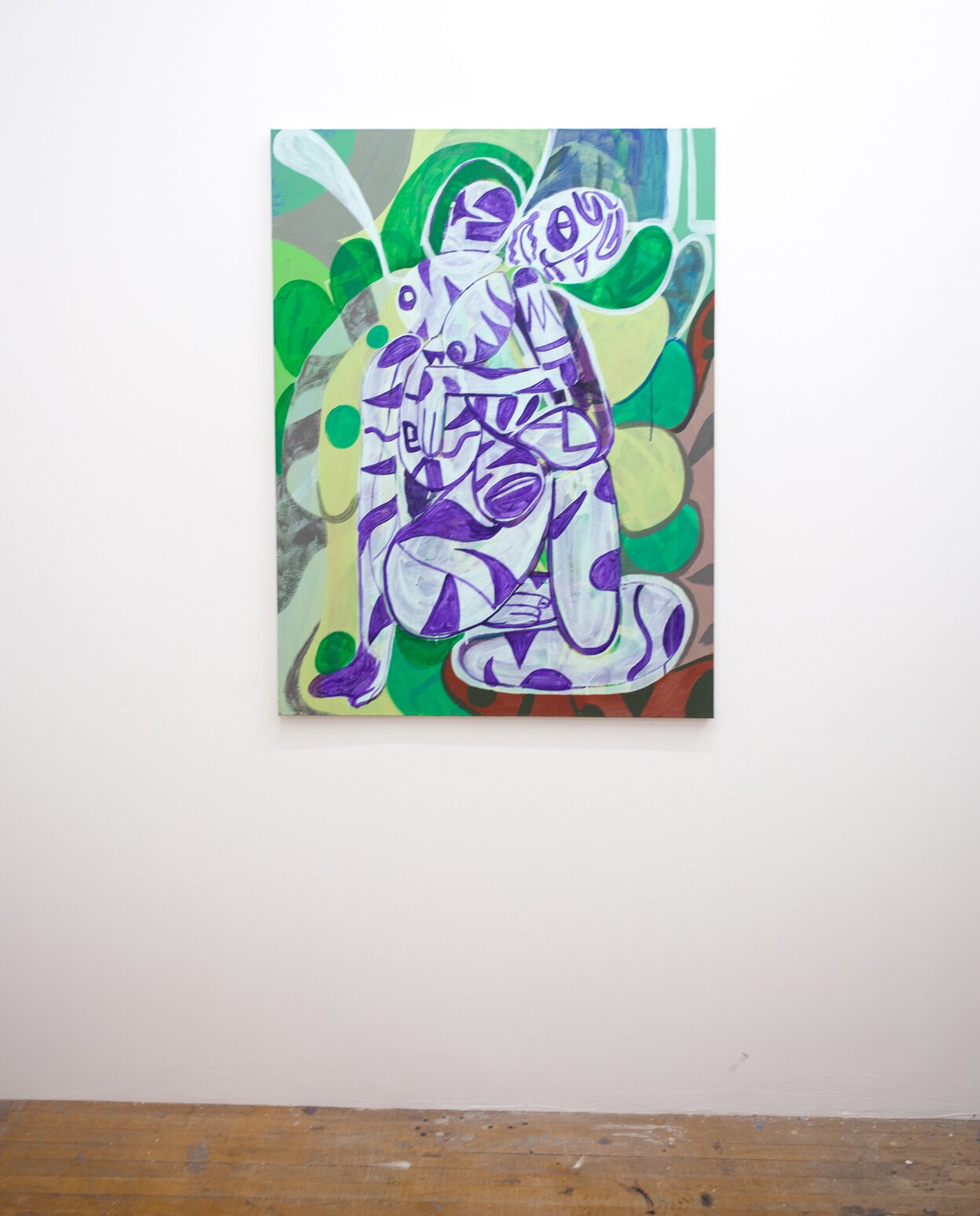
F: How do you see these paintings evolving? What future projects do you have in store?
ZW: I mentioned the big mirror before, that could be one avenue. I know I want to get more deep into the space in the paintings, the most recent painting I made has the figure sort of painting on glass in the foreground with a super simple approximation of my studio in the background and it sort of opened up a different way of thinking about it all formally. So there’s that, but you know I wouldn’t really expect that anything like that will actually happen, it’s just a way to get started.
You can see more of Zuriel Waters’s works at www.zurielwaters.com

